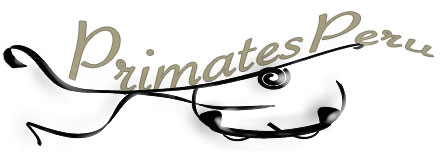Camera Gear
I’m frequently asked what kind of cameras do I use. I’ve been using the Nikon system for over 20 years now. I bought my first Nikon camera, the awesome pro film body F4s, in 1989. That camera along with my N8008s backup saw many thousands of rolls of Kodachrome, Ektachrome, and Fuji Velvia film as I travelled all over and learned the basics of photography. A few years ago I entered the digital challenge when I felt comfortable enough with the quality that the Nikon D2x offered. I now shoot exclusively digital and have switched back to the FX sensor size with the D3 and D3s added to the lineup. Since I seriously began shooting herps my mainstay lenses are the 105mm and 60mm macros.
The past couple of years I have made a great effort in learning some advanced lighting techniques, especially in the field. I have a semi-custom bracket and and use a mix of Nikon SB900 and SB800 flashes coupled with the R1C1 lighting kit. I am challenged by every subject to find the lighting that is right for the animal and its activity patterns as well as being artistically creative. This means that I’ll use a variety of light modifiers and whenever possible play with natural lighting mixed with artificial (what is that anyway?) light. I’ll even use flashlights to help mix it up. The process has been quite fruitful these last couple of years and continues now that I study the works of several notable professional wildlife, editorial, and fashion shooters. Most of my controlled lighting shoots are strictly with my reptiles and amphibian. The secretive and flighty nature of these animals means they need to be staged for photography. Dark forests, extremely shallow depths of field, and a necessity to be mobile in camera and lighting means I have to add and control light. Shooting birds and mammals is a different skill and art form. I almost always use natural light when shooting those subjects.
For photographing birds one HAS to go big. For them I am almost always going to use a big 600mm lens, frequently with a 1.4x teleconverter.
For scenics and walkaround shooting I use other lenses such as the super sharp new 14-24mm and the 24-70mm lenses and occasionally a 16mm fisheye. I have an older version of Nikon’s sharp 80-200mm zoom that I used to use a lot. I don’t shoot that focal length too much right now but look forward to getting back into it. The beautiful 200-400VR lens is what I use for the occasional mammals or larger birds. Tripods are a must in many photographic situations and I have 3 depending on the subject. All are carbon fiber which I prefer over aluminum legs. For the big bird lens I use a dedicated Gitzo 1548 coupled with a Wimberley gimbal head. This is a monster but necessary when holding ~15lbs of camera and lens rock steady. My main tripod is a Gitzo 3541xls fitted with a Really Right Stuff BH-55 head. This is a great combo for all around use. For my lightweight travels I have a downsized Gitzo 1157 and a RRS BH-40 head.
I’m a Nikon guy and have a lot invested in their set up. Canon and other manufacturers also produce some fantastic gear. Each manufacturer has its strengths and weaknesses in their products and likely every photographer will tell you the gear is just a tool to help you get the shots. It is the person behind that camera that has the skill and vision to capture what he or she wants. I’ve seen wonderful herp shots taken with point and shoot cameras. Despite what you see here I suggest you don’t become a gear head in the hopes your pictures will get better. Each piece of gear was deliberately purchased to overcome specific problems I’ve encountered in the field. Only intensive shooting, editing, and study will allow you to get better.
2013 Update:
This past winter I had an offer to buy my D3 from a good friend. Unexpectedly I took him up on it and used the funds to get the D4. I hadn’t really planned on getting this body as the upgrades didn’t seem to warrant the costs – says someone who makes no money off of this hobby. But I must say that there is something subtly wonderful about the files that come from this body. It’s not just the bigger file size either. The images seem sharper or better or something. I can’t quite put my finger on it but when I examine birds shots I can’t help but think that something has improved – it couldn’t be me right? I haven’t noticed the slight dynamic range improvements that others have posted and I still find that Nikon meters tend to overexpose but these are minor issues. I am looking forward to pushing the new separation of the exposure compensation controls between body and flash. This will get tested soon.
I also embarked on a bird project last spring and summer. Little birds. Shy birds. So I added the 1.7x teleconverter to help out there. Now if I can only find a way to eliminate heat refraction (shimmer) I face on that project. And I added the Really Right Stuff ground pod. I am a firm believer that we should be shooting our subjects from their perspective and most of mine are way down low. The ground pod just makes it easier to get low. And lastly, for now I’m sure, I traded the old 80-200 for the newer version 70-200. I almost got (ordered then cancelled) Nikon’s tilt/shift lens. I figured it might help when shooting some of my building/cabin/hut scenes but more importantly I wanted to play with some macro/wildlife with it. Maybe next year.
Lastly, most photographers will tell you endless stories about their choice of bags. Most have closets stuffed with various incarnations. As do I. But lately I think I’ve finally found bags that I love and have me covered. I’ve been using Moose Peterson’s MP-1 photopack when travel space is a concern. I get lots of gear crammed in here and it fits even in the overhead space of commuter jets. I also love the ThinkTank line of products. I use their Airport International for more leisurely travel (when I’m not taking the 600mm), their Shapeshifter backpack, and their Retrospective shoulder bag. Between these 4 bags I think I finally have almost all my travel conditions covered.
![]()







4 comments
Love these pics
Great website Tim. Love the snake pics and the travel photo’s. Now that I have actually encountered a deadly snake (don’t laugh) i can appreciate your passion for such creatures.
Hi Timothy.
I was in Napo wildlife some years back and photographed a snake. We were told it was a deadly snake. I am cataloguing my images and was hoping that you might recognise it if I sent it to you.
Gerard
88l1t8